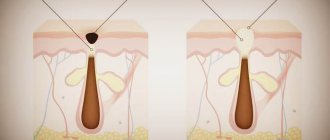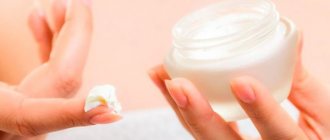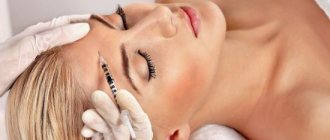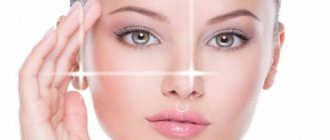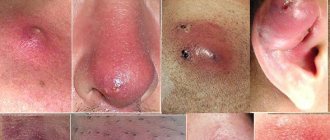Few women do not dream of maintaining freshness and beauty, if not forever, then for as long as possible. And at least look younger than your age. Of course, first of all, when forming an opinion about age, they pay attention to the condition of the skin, the presence or absence of wrinkles, age-related changes, evaluate the clarity of the oval of the face, the brightness and moisture of the skin and other factors that are difficult or impossible to hide.
Without radical means of influence, it is impossible to completely eliminate existing signs of age. But knowing how to properly care for facial skin, smoothing out problems and slowing down the aging process of the epidermis is within the power of every woman.
Careful care every day is a basic part of maintaining a satisfactory appearance and, as a result, self-confidence. An important rule is to do this in accordance with your skin type, its age stage and in accordance with the principles that professional cosmetology dictates to us.
The structure of facial skin and the effect of cosmetic procedures on it
Skin is one of the most important and complex organs of the human body, containing 60% of the moisture necessary for life. And numerous pores, nerve endings, capillaries and blood vessels, sebaceous and sweat glands in the skin are a whole factory for serving the needs of the body.
The external state of this organ is not only determined by genetic and age factors, but also directly depends on lifestyle, the presence of diseases, including chronic ones, and dietary characteristics.
Numerous skin cells with ongoing metabolic processes throughout life directly affect how any person will look at any given time. Cosmetology helps us improve our appearance.
The structure of facial skin begins with the upper layers of the dermis. The most active, but not too long-lasting effect can be exerted on them with the help of care products and procedures at home. The underlying subcutaneous fat layer consists of connective tissue and significant accumulations of fat, with multiple blood vessels and nerve endings passing through them.
The subcutaneous fat accumulates and stores nutrients necessary for the normal functioning of the epidermis. The appearance and deepening of wrinkles on the face requires strengthening the skin and relaxing the facial muscles, since such wrinkles are aggravated by facial expressions and sagging skin fiber structure. First of all, sufficient hydration and products that promote the production and increase of collagen and elastin are required.
Skin types determined by cosmetology
The structure of facial skin is determined by nature and is the same for absolutely all people, but the appearance of each person is strictly individual. In addition to hormonal status, the appearance is seriously influenced by the work of the sebaceous glands, which determines the skin type. Traditionally the following types are classified:
- normal;
- fatty;
- dry;
- mixed or combined.
You should know that it may change with age and with certain diseases of the internal organs. Knowing how facial skin works and determining its type, you can choose an effective cleansing and care program.
What determines the condition of the skin
Before moving on to lotions, massages, and baths, let’s try to find out what the health of the skin depends on. The human body can be visually represented as a complex biochemical process in which the final result is determined by the quality of raw materials and production conditions. In other words, the state of the body, nutrition, lifestyle, environment, relationships with other people, etc. are reflected on the skin.
Ideal facial skin is the result of the harmonious functioning of all organs, proper nutrition, physical training, lack of stress and proper care. If you have skin problems:
make sure your digestive organs are healthy; cleanse the body of toxins that interfere with the absorption of beneficial elements from food and prevent the elimination of toxins; normalize your diet; Use special care that suits your skin type.
The condition of the digestive organs can only be assessed by a doctor, and you should contact him. If problems exist, undergo a course of treatment or dietary nutrition. Only after this does it make sense to move on. Masks, creams, lotions, foundations will only temporarily mask defects without eliminating the underlying cause. And cleaning from toxins in diseases of the stomach, liver, kidneys, and intestines in some cases is dangerous to health. Changing your eating habits is where you can start on your own.
Back to Contents
Normal type
The normal type is a real natural gift for its owner. It is the least common. The structure and structure of this type of skin is distinguished by elasticity, smoothness and even tone. Pores and vascular network are not expressed, pigment spots, peeling, redness, inflammation, acne and oily sheen are absent.
Unfortunately, these days it is almost impossible to have such skin without making any effort, since the environment, modern lifestyle, and food are now far from ideal. In addition, with age, it turns into the dry type at one rate or another.
Shagreen
Chevrette
— sheep
leather , made by chrome tanning, is distinguished by high elasticity, softness, and a peculiar funnel-shaped pattern. For shoes, chevret is made from sheepskin of steppe and Russian breeds of sheep; their skin is less friable and more durable.
Morocco
-
leather , dyed in bright colors.
Rough, pimply and rough, characterized by increased moisture permeability and breathability. Typically used for the production of summer open shoes.
Dry skin
She looks best at a young age, as there is no oily shine on her face, no enlarged pores, and the appearance of pimples is minimized. However, very soon it becomes very thin, loose, and also quite vulnerable, prone to peeling and redness.
With age, spider veins become noticeable on the face (most often in the cheek area). This dermis of the skin is prone to painful reactions to aggressive environmental influences, changes in climatic conditions and temperature changes. If it is not provided with regular nutrition and additional fats and moisture, it loses firmness and elasticity much faster than other types and becomes covered with a fine network of wrinkles, even in relatively young women.
How to distinguish leather from a substitute
Often sellers sell items made of leatherette under the guise of genuine leather. Moreover, distinguishing one from the other is sometimes not so easy. In order not to be deceived, it is worth doing your own little research in the store. What to pay attention to:
- Internal seams and stitching. You need to find a back seam on the inside of the item or a small sample of leather. Natural material will be denser and thicker, its inner side will be slightly rough to the touch.
- Color and elasticity. Faux leather has a smooth and uniform color, and also breaks when bent, and the shade will change at the bend. Genuine leather quickly takes on its original shape and has its own pattern and porosity.
- Relief and reverse. Faux leather has no pores, or they will be uniform and symmetrical, while natural material has random porosity combined with small folds on the surface. The basis of leatherette is textile or knitwear; natural leather has its own inner surface with characteristic fibrousness.
Oily skin
Oily skin can be recognized by enlarged pores that are prone to acne and purulent pimples and an oily sheen due to the accelerated production of sebum. The skin is quite thick, with a grayish tint. But, despite all the obvious disadvantages, it also has advantages: good elasticity, endurance, which allows you to be less afraid of an aggressive external environment and premature aging. After thirty years, women with oily skin type most often look younger than their peers with dry skin type and in most cases move into the group of women with mixed (combined) type.
Cordovan
Cordovan is obtained from the bottom layer of horse hide, and from only one part of it - from the croup. Cordovan is famous for its wear resistance and durability - with proper care it will last longer than calfskin. Michael Anton claims that “Cordova leather is the toughest leather of all,” but adds that “because it retains heat so well, it is impractical to wear in the summer.” In addition, it is worth adding that cordovan is much more expensive than calfskin, since the process of its production is labor-intensive and very long.
Oxford shoes made of cordovan leather Carmina 910 Burgundy Oxford shoes made of cordovan leather Carmina 910 Navy
Visually, cordovan differs from calfskin, but the difference is not always obvious. Classic Cordovan has a pronounced noble shine, but sometimes there are options without shine or with minimal shine. However, you can recognize Cordovan by the appearance of creases and folds.
The folds in horse leather are formed completely differently than in calf leather, and after a few years, Cordovan leather shoes acquire a unique, unmistakable patina of time <…> the areas of greatest stress become lighter, especially in the classic red-brown models.
Bernhard Roetzel, author of "The Gentleman"
Creases on Cordovan shoes usually have a wavy nature.
Mixed skin
This skin type is the most common. In the area of the forehead, nose and chin (in the T-zone), where the pores are enlarged, blackheads are often noticeable, and there is often an oily sheen. And the area around the eyes and cheeks remains normal or even dry. Knowing how to properly care for facial skin, this type can become normal over the years, albeit with areas of dryness.
All major skin types have been described above. In some materials you can find references to sensitive type or about acne-prone skin care, but such designations are not entirely professional, since each of the classic four types can at times have similar problems.
Nubuck
Nubuck is a chrome-tanned leather that is produced by sanding the grain of the leather with fine abrasives to give it a refined appearance. The process of this treatment turns the smooth surface of the skin into soft and velvety. Nubuck has a soft, almost imperceptible pile, it is very wear-resistant, has excellent breathability - the skin “breathes” in shoes and clothes made of nubuck. One of the subtypes of nubuck is oiled nubuck. This is leather that, after sanding, is impregnated with a special oil-based substance. Oiled nubuck has a slightly oily surface, an “antique” look, and is not afraid of water.
Basic rules of care
Of course, all types of facial skin have their own characteristics, which determine an individual set of rules for cleansing and nutrition, as well as exceptions from the list of this or that item, however, there are also general basic measures and laws according to which basic facial skin care should be carried out, regardless of specifics of its type. Professional cosmetology helps determine these basic rules.
The structure of the facial skin in this matter is of paramount importance, therefore the most important stages of care are cleansing, toning and moisturizing. And only after this, scrubs, peelings and masks suitable for a specific type and age serve as an additional measure.
Classification by type
Leather is divided into varieties, taking into account the method of dressing and processing, dyeing, the type and age of the animals from whose skins it is made. Calfskin is considered the highest quality due to its unsurpassed softness. More practical and inexpensive analogues: pigskin and sheepskin. The most popular types of leather:
- Nappa is a semi-aniline leather made primarily from cattle hides;
- Suede, a soft and loose type of leather, has a characteristic nap on the outer surface, it is made from deer, elk and goat skins;
- Nubuck differs from suede by having a finer pile on the outside, but it is very capricious and requires special care;
- Lacquered, has a thin layer of varnish on the surface that preserves the softness and strength of the leather, is often used for the manufacture of accessories and shoes;
- Chevre, characterized by density, elasticity and a characteristic pattern, is made from the skins of kids;
- Sheepskin, more often used for sewing fur products, is made from the skins of adult sheep.
In recent years, exotic types have been rapidly gaining popularity, for example, the skin of fish, kangaroos and birds, which have replaced elite leather from reptiles. Special processing methods are used for them to preserve their strength and original appearance. You should choose an item by type of material, focusing on its application, your own tastes, wardrobe style and budget.
Facial cleansing
The face needs daily thorough cleansing, and this should be done both in the morning and in the evening. Even if there is no need to remove decorative cosmetics, it is necessary to cleanse the face of dust, accumulation of fatty secretions and toxins, as well as dead cells that form a layer that prevents the skin from breathing and receiving beneficial substances from skincare cosmetics.
If you have makeup, you must completely remove it with a suitable product, depending on the durability of the cosmetics and your skin type, and only then wash your face with warm or cool water. You should never wash off your makeup or wash your face (even if you have oily skin) with regular toilet soap, even if advertising promises miracles when using it.
Bar soap with an alkaline base, unlike special cleansers, destroys the natural protective layer, disrupting the acid-base balance. This causes irritation, excessive dryness and the proliferation of bacteria, which the dermis with impaired natural barrier functions is no longer able to cope with.
Oily skin, as well as inflamed, dry, sensitive, young or mature skin, must be cleansed in accordance with its characteristics only with special cleansers - gel, mousse, cream or facial foam. You should try to rinse off not with chlorinated water directly from the tap, but with boiled water or passed through a filter. You can use drinking bottled water without gas.
It is very useful to sometimes wash your face with water diluted with decoctions of plants valued by cosmetologists. It could be chamomile, calendula, St. John's wort, mint, sage. Decoctions also require a competent approach, because St. John's wort and calendula have anti-inflammatory and astringent properties, which makes them useful for oily skin, and flaxseed decoction is loved by dry and sensitive skin.
It is useful to wipe your face with an ice cube, which can also be made from a herbal decoction. It is good to use table mineral water for making ice. This procedure perfectly tones and refreshes the face. However, cosmetologists do not recommend it for those with reactive, sensitive skin, as well as for skin with a pronounced vascular pattern.
Peeling is an important procedure that can be easily done at home using exfoliating scrubs and masks. They can be purchased according to your skin type and personal preference. When choosing, you need to pay attention to the fact that the peeling is specifically for the face, and not for the body, with small scrubbing particles and an elastic structure, so as not to unnecessarily injure the epidermis - the top layer of skin - during the exfoliation process.
That is why when peeling it is important to massage your face along the massage lines, without being overzealous or pressing too much. It is also necessary to remember that such a product may contain extracts and extracts from exotic fruits, which can cause an allergic reaction. And on sensitive skin, the peeling procedure itself can cause it.
Smooth calf leather (calf)
Perhaps this is the most common and versatile material with many advantages. Being comfortable, pleasant to the touch and durable, calfskin is not too expensive, although it cannot be called cheap - it is used mainly for shoes in the upper and above-average price segments. More budget shoes usually use cow leather, and sometimes bovine leather, which is thicker, rougher, less pleasant and less elastic.
Good shoes are made from calfskin - wearable but pliable, breathable but retaining warmth and shine.
Michael Anton, author of The Suit
It should be noted that smooth calfskin comes in different varieties. A very versatile option is box calf - tanned leather, often black, but sometimes brown or burgundy-brown. It is easy to care for, practical, comfortable and durable. If desired, it can be polished to a shine - for example, by making glassage.
Box calf leather brogues
Another popular type of calfskin is bookbinder/polished leather. She has a pronounced shine that not all men like. This type of leather is easy to care for, but it breathes less well than box calf, and can also be a bit harsh. In addition, it differs from box calf tactilely.
Bookbinder leather derby shoes (polished)
The third subtype of calfskin - crust - is leather that is not dyed in the tannery. It is already painted at the factory, during the shoe manufacturing process. Such skin may be vulnerable to harsh external influences (abundance of moisture, dirt, salt and reagents). If it has a patina created at the factory - picturesque stains - then you should not wear such shoes outside on days when it is humid and dirty, and reagents or salt are scattered everywhere. In addition, you need to be very careful when treating such leather with cream or shoe polish.
Loafers with tassels in crust leather
Finally, there is fatty calf leather - it is quite smooth, but still differs in appearance from box calf. During the production process, it is saturated with fats, which increases its resistance to moisture and dirt. Berwick calls this leather Chromex. It is noticeably better suited for bad weather than crust (which, by the way, Berwick refers to as mancalf).
Chromex leather derby shoes
Toning
Any skin after the cleansing procedure must be toned. Many people neglect this stage, but in vain. It is tonics and special lotions that help maintain the elasticity and freshness of your face for a long time. Cosmetic tonics remove excess cleanser, open pores, helping to prevent keratinization of the upper layer of the epidermis, and help prepare for the final stage of the main care program - applying suitable serums and creams.


